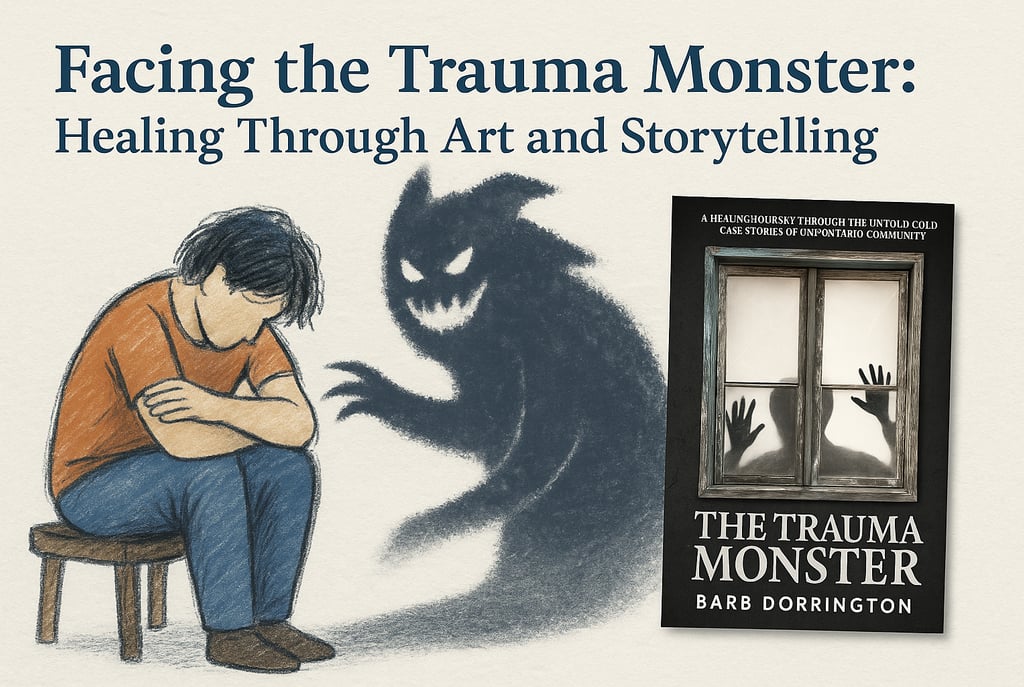Facing the Trauma Monster: Healing Through Art and Storytelling
Barb Dorrington
5/12/20251 min read


Facing the Trauma Monster: Healing Through Art and Storytelling
Trauma can feel overwhelming, often described by survivors as a monster lurking in the shadows, haunting their daily lives. The journey to healing may seem daunting, but one powerful way to navigate this path is through art and storytelling.
In her book, The Trauma Monster, Barb Dorrington emphasizes how creative expression provides a safe space to process complex emotions, reclaim your narrative, and foster resilience. Engaging in activities such as drawing, painting, journaling, or writing poetry not only offers an emotional release but also empowers survivors by giving voice to their experiences.
Creativity allows trauma survivors to externalize their feelings, turning intangible pain into something tangible and manageable. When words alone are inadequate, art becomes the voice for the unspeakable, helping individuals communicate their truth in a non-verbal yet profoundly powerful manner.
Here are practical steps to begin your creative healing journey:
1. Start Small and Gentle: Begin by doodling or journaling for a few minutes each day. There's no pressure to create a masterpiece—it's about the process, not the product.
2. Find Inspiration in Your Story: Reflect on your personal journey. What symbols, images, or metaphors resonate with your experiences? Using symbolic imagery can simplify complex emotions and provide clarity.
3. Explore Various Mediums: Experiment with different forms of creative expression. Whether it's visual arts, poetry, dance, or storytelling, find what resonates deeply with you.
4. Create a Safe Space: Dedicate a specific space or time for your creative work. This routine can foster a sense of safety, helping you feel grounded and supported.
5. Share When You're Ready: Sharing your creations with trusted friends, family, or supportive communities can be therapeutic, fostering connection and reducing feelings of isolation.
Barb Dorrington's approach in The Trauma Monster highlights real-life examples and workbook exercises that guide readers gently through the healing process, reminding us that every step, no matter how small, is significant on the path to recovery.
Embrace your creative side as a companion in your healing journey, transforming pain into resilience and reclaiming your narrative from the Trauma Monster.


